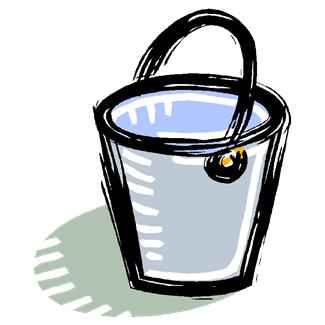We all kick the bucket. It’s a given together with taxes, as the famous saying goes. Before we do, however, there’s that notorious list of life goals that need to be checked off. With the Barroso Commission departing in October 2014 and the European Parliament elections looming in May 2014, Europe will have to start prioritising its own bucket list: the 2013 Commission Work Programme.
It’s a legacy year and there’s clearly a lot on the EU’s plate, ranging from shadow banking to shale gas, and although the Commission and Parliament would like to see every dossier wrapped up before departing next year, choices will have to be made. Certain dossiers will be hastened whilst others may be delayed; both will leave many dissatisfied. Other items on the political agenda will be more fortunate. One dossier, which headlines the bucket list and is certain to be ticked off in 2013 as part of ‘the legacy’, is air quality.
As you know from my previous posts (here and here), Europe dedicated 2013 the ‘Year of Air’ for a reason: 17 of the 27 EU Member States currently fail to meet air pollution standards. According to the European Environment Agency, exceeding legal limits reduces life expectancy of those living in the most polluted cities by approximately two (!) years (on average in Europe, 8.6 months). The on-going, comprehensive review of air policy (the Air Quality Framework Directive and its five daughter directives) looks to address human and environmental health and safety by way of stronger air quality laws addressing emissions at the source, and the Commission has received clear support from stakeholders to do so.
On 4 March, the public consultation on the air policy review closed and results, which are still to be officially published here, were presented at the 5th Stakeholder Expert Group on 3 April. According to speakers, including Thomas Verheye, Head of Unit for Industrial Emissions, Air Quality & Noise at DG Environment, consultation responses were “quite green” and showed that a clear majority of respondents, including the public, experts and national authorities, support:
- Tighter emission controls to ensure compliance with air quality standards;
- 2020 targets under the national emission ceilings directive beyond the Gothenburg Protocol;
- Binding air quality standards for fine particulates (PM2.5) for 2020;
- Closer alignment to World Health Organisation (WHO) guidance.
Of note, respondents also emphasised the need to address short-lived climate forcers, such as ozone.
As you remember, the public consultation, together with the REVIHAAP and HRAPIE reports, will feed into the review – this makes the above input very relevant and very important in shaping the Commission’s upcoming air quality proposal. The proposal is very likely, especially following the widespread support voiced in the consultation, to set much stricter standards for both anthropogenic and natural sources of air pollution. With the Commission, as highlighted by Environment Commissioner Potočnik, being absolutely “committed” to the cause, and given other recent setbacks, you can bet your bottom dollar that they’ll be looking to strike off air quality from that bucket list with vengeance.
Expect further updates as we move closer to the publication date: September 2013.
Find Out More
-
Generative AI is changing the search game
May 8, 2025
-
The challenges facing Europe and European leaders at Davos 2025
January 24, 2025



